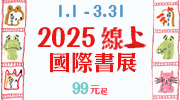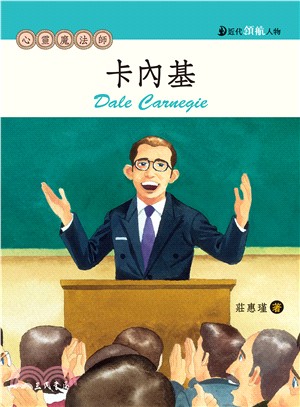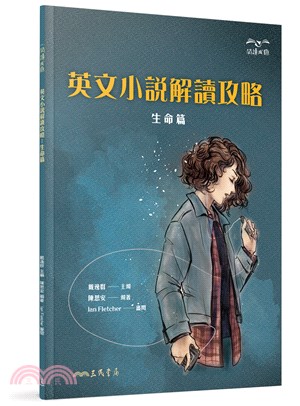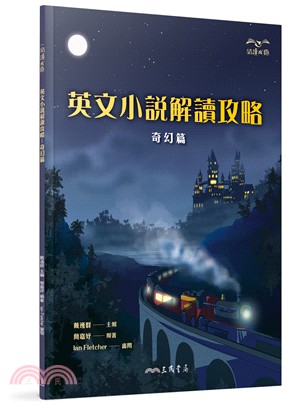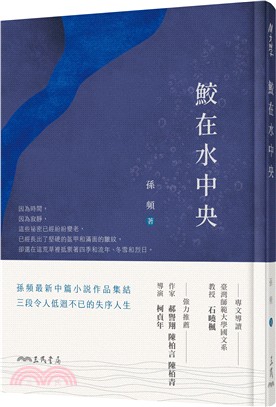釘地(電子書)
商品資訊
ISBN:9786260116910
EISBN:9786260119249
出版社:白象文化事業有限公司
作者:游本寬
出版日:2023/10/01
裝訂:電子書
商品碼:2222221517213
商品簡介
浮貼精確位置資訊的《釘地》,以數位「編導式攝影」的形式,讓資訊、地景、地名在合體的同時, 凸顯了當代生活對資訊的高度依賴。
《釘地》放下頻頻讓人疑慮「數位紀錄」的真實性,直接運用數位相機自動潛存硬體資訊的功能,加上即時或事後在電子地圖查詢的結果,再透過電腦數位浮貼的後製,將該地平整、直立的資訊小圖,分別添加在各個原地景的影像上。
數位「編導式攝影」形式的《釘地》,讓資訊、地景、地名在合體的同時,凸顯了當代生活對資訊的高度依賴;《釘地》藉由資訊融入環境,有時真假難辨,有時遮擋部分現場真實景物的視覺阻斷,強迫讀者繞道的去認知對象。因此,如同幽靈浮貼的照像資訊圖:
有時,偽裝成現場中的視覺元素,意圖融入原有的景致;有時,如同獎章,浮掛在地景的最前方,讚許著地和名的文化貢獻;有時,突顯場景中容易被忽視的小對象,實質騷動觀者的閱讀習慣;有時,扮演不請自來的外來客,遮掩了現實中部分關鍵、次關鍵的內容;更多時候, 表徵攝影者闖進陌生地,以非凝視的眼光,鬆散論述著自身東張西望的身影......
《釘地》多樣自由排組的形式,一來,視覺化攝影者在場域中東張西望的型態;二來,淡淡反諷了,繁瑣過多的訊息,在現實生活中所造成的困擾。
作者簡介
1956 年生,美國俄亥俄大學美術攝影碩士(MFA)、藝術教育碩士(MA),曾任國立 政治大學傳播學院專任教授、特聘教授,現任國立政治大學傳播學院兼任教授。在國內各大專 院校從事影像創作、影像傳播與美學教育近 35 年,退休後往返美國、台灣持續教學、創作,並 於每年秋天發表新系列作。近年亦嘗試採用虛擬平台(Facebook)發表小品,直接回應數位時代 的非物質性。曾在台灣、中國、日本、韓國、美國、英國、法國、德國等地舉辦個展或參與聯 展逾百場,今年已在虛擬平台發表小品「有春」系列及「太太的義大利照相簿」系列,預告創 作即將進入新紀元。作品曾被台北市立美術館、國立臺灣美術館、國家攝影文化中心等機構典 藏及私人收藏。著有《論超現實攝影》、《美術攝影論思》、《「編導式攝影」中的記錄思維》等, 編有《手框景.機傳情 ―― 政大手機影像書》、《紀錄攝影中的文化觀》等。已發表攝影藝術 書包括《游本寬影像構成展》、《真假之間》、《台灣新郎》、《台灣公共藝術 ―― 地標篇》、 《游潛兼巡露 ――「攝影鏡像」的內觀哲理與並置藝術》、《《鏡話.臺詞》,我的「限制級」 照片》、《五九老爸的相簿》、《超越影像「此曾在」的二次死亡》、《口罩風景》、《招.術》、 《既遠又近......》
序
作者序
先說:我是八堵人
前不久, 跟著汽車導航去宜蘭 冬山鄉的頭堵,沿途滿腦子想著:小時候父親在汐止辦公室附近的五堵, 有座東山煤礦廠。每一次跟同學說我是八堵人,都還得補上一句,在基隆附近。沒有同學住七堵, 也沒有人知道六堵是個工業區,不確定有沒有四堵或三堵。 當年, 大人在飯桌上說「堵」既是漢人防禦山蕃的建物,又是基隆河上的水壩方便船隻上下貨等等, 讓小孩子有機會向他人炫耀自己的第八個堵。 現在, 不是所有的列車都會停靠。二二八紀念火車站的地標已經有些老舊。不遠的過港、暖暖、四腳亭, 假日可以看見稀稀落落的遊客,不知道跟聲音低沉渾厚,第一代的電台情人李季準生前住在附 近有沒有關係?
地名,有精確位置的物理性,有和他人共有的集體記憶。
地方感,個人故事的根源、情感性的連結,意識的體驗,生命意義的歸屬。
擇名.挑地.創作.筆記
《法國椅子在臺灣》(1998-99) 類旅遊照片的藝術形式,是個人對老外虛擬的在地導覽。 《鏡話.臺詞》(2014) 分享了日常中,臺灣人如何創意的把文字溝通這件事給視覺化,像是:原 本用耳朵才會聽得到的臺灣話「起廟」,崩山下、火燒店、功勞等,臺味十足的地名。至於沒有 入列的山腳、大內......好玩的地名,念茲在茲。幾年後,對地名的關注離開了秀才、姑爺、店子前明顯在地味的面向,轉移至統鼻、羅罕、抄封等,字意抽象但可以讓自己產生莫名感動的地名。
新的階段,結合了外出創作和相關的地名,開始思索如何擺下:「地」―― 清晰可見的景物、 「名」―― 懸浮的文字意象等,兩者在圖文方面的刻板關係。同時,自我也洞視了:過往在閱讀臺灣的意識下,零零星星所看到的不尋常地名,多融入在其他個別的主題之中,尚沒有能力 將它們歸納出稍完整的概念。好在,先前的經驗,都成了近期新作形構的重要底蘊。
《釘地》創作的泉源,來自地名在文字上的召喚,那種眼見、腳踏、體感的渴望,引導了自己 前去探訪。另一方面,應該是數位資訊在當代文化中,極其複雜又詭異的角色,意外觸發了善 用汽車導航器上所提供的「神奇」地名。
統整《釘地》將近 200 個地名的探訪,我的概念圍繞在:
事,不尋地名的原生態,不求土地正義的伸張,不求證河道上的傳說
志,親臨現場,肉身抵抗數位虛擬資訊對「舊文明」的挑戰
文,論述被人遺忘的老地名、小地方,在當下大環境中的聯想
圖,不求景觀紀錄的寫真,不做電子地圖的圖鑑
目次
先說:我是八堵人
三角
外出看景先認「名」
擇名˙挑地.創作˙筆記
芒埔
電插,瀏地圖
車。人。地點。
濫背
文字欲照像
數位尋名,人工釘地
十三天
Dropping A Pin
阿兼城
官有地
Latent Images of Mental Double Visions
Staged Photography of Digital Images and Information
車店
舊地,新人留下
照像˙資訊的數位「編導式攝影」
險崙子
落單老地方的「字畫.像」,看到。拍下。寫下。
「明室」成像
豎埒
線浸,到不了
「心智複見」的潛影
網絃
外出創作,記得關門
中英文個人簡介
打剪
釘地車遊 002
版權頁
菜公
挖仔
隙子
草分
十間分間
內轆
莊肚
社角
斗車員
下樹
吊神牌
浮景頭
四百名
龜頭
三木竹仔
喀哩
羅罕
蝦湳
四公里
打那美
牛食水仔
石吼子
八分仔
史港
百三
中西
阿柔洋
尿載
覆鼎金
南岸
統鼻
網紗
半路響
岸上
關路缺
下三屯
下長流仔
貴舍
打簾
十八家
孩兒安
朴鼎金
乃木崎
西天
麻布樹排
阿力
蛇大窩
後潭
咬狗
樹子窩
把竿
抄封
圓孔頭
角樹
呆風
看西
十八埒
凹湖
官真巷
阿爸窩
阿密哩
部邊
面盆
中固
三人共坑
書摘/試閱
◎車。人。地點。
避開交通要道,確定不是警察會開單的時段,靠邊隨意停,運氣好時才會恰巧停在地圖標示的 位置旁,經常是,在附近繞了又繞。
熄火,壓下車子四邊暫停的閃燈,下車,鎖上門,戴上帽子,換成太陽眼鏡,檢查一下 SONY 機身的電池狀態,地,靜坐;名,待著;車子在一旁見證。小跑步穿越道路,手機高高舉在胸前, 低頭查看著藍點地標,身體不斷移動,路口向左,巷子底向右......到達眼睛一直盯著看的定點 「藍星」。
寬心。
大樹旁屋簷下的在地人(絕大部分是年長者),坐著,沒有站起來:找誰?沒有水土不服的反應,自然的閒應:無頭無尾褪了色的老故事。
一樓住家紗門口。
大大小小正擺、翻面的拖鞋,紅布面的球鞋,男士的工作鞋。 附近的治安好,連狗都不會偷偷的叼走?
抬頭
沒有電梯的五樓公寓,住頂端阿嬤數著:晚飯前,上上下下我今天已經爬了多少階的樓梯。
穿著附近高職制服的女生擦身而過。請不要問我:巷頭的豆漿店,每天可以賣出幾碗鹹豆漿?
帶著黑色安全帽正把機車停下來的男人,請問:里長是男的還是女的?
羊肉攤小小告示板:「加湯不加價」。外地人不知道,碗裡要留一根骨頭或小肉塊,不是捧著 空碗去要老闆免費加湯。
需要上廁所?答案很肯定:一定得找到 7-11,不是阿公阿婆的柑仔店。
◎「心智複見」的潛影
底片相機,
感光的膠卷深藏在機身裡。拍照,絕大部分的人:微閉一隻眼睛,另一隻緊貼著觀景窗框景,對焦,快門按下,當下看不到底片上「潛影」的結果。外在的世界和成像時間的作業差;眼睛、手指、圖像不同步;認知先行切割,再另尋時機結合的官能經驗,經常是傳統攝影家產製藝術的必要。
數位相機,
一片薄薄的記憶卡取代了感光膠卷。電源開啟,先進光學的鏡頭在高階顯像的螢幕上,不斷線的現場假像便即時呈現了:小號、有邊框的現實孿生體。數位攝影家,以即時性的眼見為憑,浮動的訊號為證,不討論照像的潛影現象和藝術。
數位照像。
雙眼、螢幕景窗之間,詭譎的位置和距離,快速轉換著真假有別的景物。微微散漫的眼神,自動糾正了景物的生理錯覺,按下快門前、拍照中、成像後,心智持續感知著螢幕四周更多的現實世界。數位虛擬的當下、實體的機身,斷隔了視點的持續,甚至攜手擋住了眼前部分實景的認知。它,毫不閃避的讓真假共時並生,心、眼忙碌交疊的「複見現象」,成了數位攝影中,有關於人的最大參數。
其實,
無論是底片或數位相機,照像瞬間,人的主觀似有若無,但又實質省略了其中心智對現實世界的遮掩。視覺持續建構的經驗於是斷層了,攝影者兩眼加總的所見,也從未比手上單眼透視的拍照結果更為完整。
轉身。
視覺看不到的內容或許有遺憾,但未知的部分實質上也無法抗拒。想想:意識總是自動排除對自己不利的現象,不是大聲嚷嚷、急急的推給無心,就是推托給「河道上的訊息」真假難辨。我,面對著世界,即使不轉身,數不盡如同數位拍照的「心智複見」,行、走、坐、臥,近在咫尺。
◎舊地,新人留下
沒有北上工作的 機運
沒有和外地人成為男女朋友 自立門戶
沒有生計以外的 儲蓄
留在老爸出生的地方 沒有可以即時兌換的遺產
搬遷。租卡車。打包。
買大一點點,至少厚一點的紙箱,地球暖化天氣多變,最好是防水的。捆綁的繩子。不要忘了剪刀和一把鋒利的美工刀,隨時用得上。
單門自動除霜的小冰箱。有脫水功能的雙槽洗衣機。自己釘做,上過透明保護漆的電視櫃。跟前男友等高的矮衣櫃。沒有床架,單人加寬的床墊。吃飯,偶爾看書,多機能櫻桃色的方桌。有輪子,可以調整座位高低的辦公椅。三人座,義大利假皮的淺色沙發。單環嵌入,雜牌停產的瓦斯爐。(廣告說)具紫外線消毒功能的桌上型烘碗機。大前年中秋節,鄰居買了沒有用過的戶外烤肉架。今年尾牙抽到,三層、空空的灰色工具箱。已經長出銅綠,阿嬤單隻,左右不分的嫁妝耳環。老媽年輕時,約會(不是和老爸)穿過幾次,黑白格子交叉的小背心。...... 別人眼中不值錢的心肝寶貝,罄竹難書。丟掉一些?部分捐贈?一定得現在嗎?陳年無法做出決定的決定。
新家。
中國製的便宜大門鎖一定要換新。舊地板清潔打蠟,最好整體換成和小妹新家一樣,北歐(哪 一個國家不清楚)進口仿木耐磨的塑膠地板。臥室靠窗的牆壁,應該是有雨水進來,一點髒,有時間自己再來粉刷。鐵灰色細片的百葉窗,後面的日文的標籤還在,應該要拿到新家再用,但是下班後會有時間拆下來清洗嗎?老家的 Wi-Fi 不是 5 G,連接視訊卡卡的,移過去需要更新 嗎?......
貸款。
倉儲曾經留美的小經理說,年底之前我有機會可以加班,如果有急需可以先貸款給我。心想,買台新機車可以早點回家,開門,燒水沖泡麵,坐在電視前等每個月初的彩券開獎,應該也是一種很實際的日子。
縐摺。
新家要做的事情很多,重新適應麻煩,又有鄉愁的問題。榮民阿公的房子,半夜上廁所有先人保佑,摸黑都行。等待機會,寂寞迷惘。正向,讓被等待的對方產生負面的虧欠,前提:得有對象,或反問:自己是個值得被等待的對象嗎?生活的縐摺已成生命,自在。移動的終點還是移動,自己做不到可以繼續留給下一代,子子孫孫永遠都會有搬遷的夢。天荒地老煙灰滅盡前,我,安身立命就地不動,一切照舊。
◎ 「明室」成像
手機拍照,攝影者多隨即低頭檢視一下螢幕上的影像。脖子,微微往下垂的體感,腦筋,冷不防閃出了攝影術發明前,畫家藉由描繪的輔助工具「明室」(Camera lucida)的景象。
畫家低著頭,一隻眼睛,緊緊盯著眼前的景物,另一隻眼睛,盯著「室內」45 度、 斜角三稜鏡的鏡面上:外貌寫實,有規則性消透感,和實際景物的左右方位剛好相反的現象。
畫家專注的眼神,實際上還得伴隨著餘光,引導著持筆的手,在一旁的紙上,將兩眼在鏡面上以及實景之間,快速互換的視覺記憶,或平行移轉,或潛意識的選擇,甚至詮釋,描繪出了單隻眼睛在「明室」內所觀看到的結果。
旁人不一定有機會和「明室的畫家」討論:
圖,可是你畫家對原始環境知識系統的模擬?
例如:把遠山描繪得非常逼真,山的前面如果有房子,畫面上,就應該呈現 出前後的位置關係;碰到左右物件大小不同時,也必須有可以理解的比例關 係。
圖,或許根本就是你畫家獨立意識的投射?
例如:用個人美學的涵養,局部取捨了早先在「明室」內的所見。
旁人更不察:
和現實世界逼真的「明室畫」是畫家用手所畫出來結果,不是光學自動成像的固定形體,所以,當然不會是照片的前身!
倒是,如此具有顯著消透線的圖像,為後來的照片和擬真的圖像美學打下了基礎。
不在場的哲學家冷冷的說:
「明室畫」所指涉的對象,(好像)在那兒,卻又不在那兒(但曾在那兒)......
◎Dropping A Pin
Dropping a Pin draws its inspiration from the evocative power of placenames. The names that draw you to personally witness, explore, and set foot upon these curious sites. Or it may have been the strange and complex ways that digital information works in today’s society that unexpectedly triggered my car’s GPS to lead me to these "mystical" locales.
During the initial stages, I realized that the names which captivated me most often embodied both a confident and ethereal essence. As I continued to visit these locations, I came to understand that their enduring presence was not solely due to their intrigue, but rather stemmed from a spiritual essence that has been cultivated since olden times.
Before and after arriving, I wondered whether my method - standing in place while gazing at the tracking blue dot on my car’s GPS to investigate a scene for a photograph - contradicted with my random selection of suggested place names generated by the GPS. The cool quietness and multitude of repetitive scenes recorded in my computer or camera is not intended to be representative of a virtual landmark for the places photographed.
The rhythm of my approach— tight, loose, tight, loose— is an attempt to evoke the enigmatic aspects of my inner self and the unknown content buried deep within.
After visiting nearly two hundred places, my ideas about Dropping a Pin revolve around:
Project is not about the origin of a name, nor matters of land justice, and is irrelevant to social media.
Intention to be on site in-person, to resist the inundation of virtual information against old civilization with physical presence.
Writing about forgotten places and past place names, associating them in present-day environment.
Images that don’t seek authentic representation, nor for the production of digital maps.
Thus, I reluctantly eliminated the vast majority of human traces that evoke an immediate and fleeting sense of "once being there," as well as historical references of placenames that scholars and cultural workers have studied (such as those related to colonization and political science, mythology, legends, ancient indigenous words, Dutch or Spanish terminology, as well as directional, topographical, hydrological, and resource-related place names). I also discarded numerous compound placenames (such as the terms indicated by geomantists: "upper," "lower," "top," "embankment," "enclosure," "parapet," "ridge," "port," "slide," "pit," and more) as well as endearing names beloved by wildlife enthusiasts. I even excluded names associated with old aristocratic cites, ancestral properties, and "residences" that refers to dwellings and settlements.
◎Latent Images of Mental Double Visions
Light-sensitive film is hidden in film cameras. When photographing, most people close one eye as they press the other against the viewfinder to focus and release the shutter. In that moment, they cannot see the result of the latent image on the film. There exists a discrepancy between the external world and the process of image-making; the eyes, fingers, and image are not synchronized. Cognitive separation begins first and is later combined with the sensory experience. This process is essential for traditional art photographers.
In digital cameras, a memory card replaces light-sensitive film. High-resolution images are instantly displayed by sophisticated lenses, creating a parallel reality on the small screen.
Digital photographers rely on real-time vision and changeable signals from their devices without considering cognitive separation, latent images or artistic interpretation.
Digital photography. Between the two eyes and the viewfinder, there is a mysterious interplay of positioning and distance, where real and fake scenes swiftly alternate. The faintly unfocused gaze automatically corrects the physiological illusion of the scene. Before capturing the image, during the process, and after the image is formed, the mind continuously perceives the surrounding real world through the screen. At that moment, the physical existence of the camera disrupts the continuity of perspective, obstructing the perception of certain elements in the actual scene. It boldly allows the simultaneous existence of truth and falsehood, the convergence of the active mind and observing eyes, giving rise to the "phenomenon of a mental double vision" in digital photography— a condition paramount to human experience.
In fact, the subjectivity of the photographer appears to fade away in the instant of taking a photo, regardless of whether it is done with a film camera or a digital camera. The concealment of the real world by the mind often goes unnoticed. As a result, the continuous stream of visual experience is disrupted, and what the photographer's eyes have seen becomes less comprehensive in perspective compared to what a single lens reflex camera has captured.
Turning around, the content that remains unseen by our eyes may leave us with some regret. However, the allure of the unknown is undeniably irresistible. Consider this: our consciousness instinctively filters out unfavorable phenomena. We either vehemently protest and swiftly make excuses for unintended errors or attribute them to the difficulty of discerning truth from lies in social media. Facing the world, even if I don’t physically turn around, the innumerous instances of mental double-vision, reminiscent of digital photography, are closely surrounding me in every step I take whether walking, sitting, or lying down.
◎Staged Photography of Digital Images and Information
Diverging from widely-questioned digital documentary photography, Dropping A Pin responds to my previous photography project of "staged photography", namely French Chair in Taiwan and Puppet Bridegroom. In these two projects, I placed an object with strong cultural symbolism in front of each scene. Dropping A Pin marks a new phase of "staged photography" for me as I no longer incorporated a dialogic object in the scene, but rather used the digital camera’s built-in hardware and location app to capture search outcomes on-site and afterwards. During post-production, I inserted this geographical information into each photograph.
Dropping A Pin, with its precise overlays of location information, embodies the essence of digital "staged photography", highlighting the modern-day reliance on digital information of landscapes and placenames. As information becomes integrated into the environment, the line between reality and fabrication can blur, occasionally obscuring elements of the actual scene.
These visual disruptions compel viewers to navigate and perceive the subject by bypassing a direct route. Images with ghostly overlays are:
Sometimes disguising themselves as one of the visual elements in order to blend into the scene: Da Chien
Other times resembling badges hung in the foreground, honoring the cultural contribution of the place and its name: Niu Shih Shui
At times accentuating small objects easily overlooked in the scene to disrupt the audience’s reading behavior: Nei Lu
From time to time playing the role of uninvited guests who conceal the crucial or secondary content in reality: Tong Bi
More often, representing a photographer who intrudes on a strange place, looks but doesn’t stare, and mindlessly moves around the site: Jiao Shu......
Dropping A Pin embraces a varied and unconstrained form. First, it visually portrays my curiousity. Second, it subtly mocks the overwhelming weight of information that can disrupt daily life.
主題書展
更多書展今日66折
您曾經瀏覽過的商品
購物須知
為了保護您的權益,「三民網路書店」提供會員七日商品鑑賞期(收到商品為起始日)。
若要辦理退貨,請在商品鑑賞期內寄回,且商品必須是全新狀態與完整包裝(商品、附件、發票、隨貨贈品等)否則恕不接受退貨。






